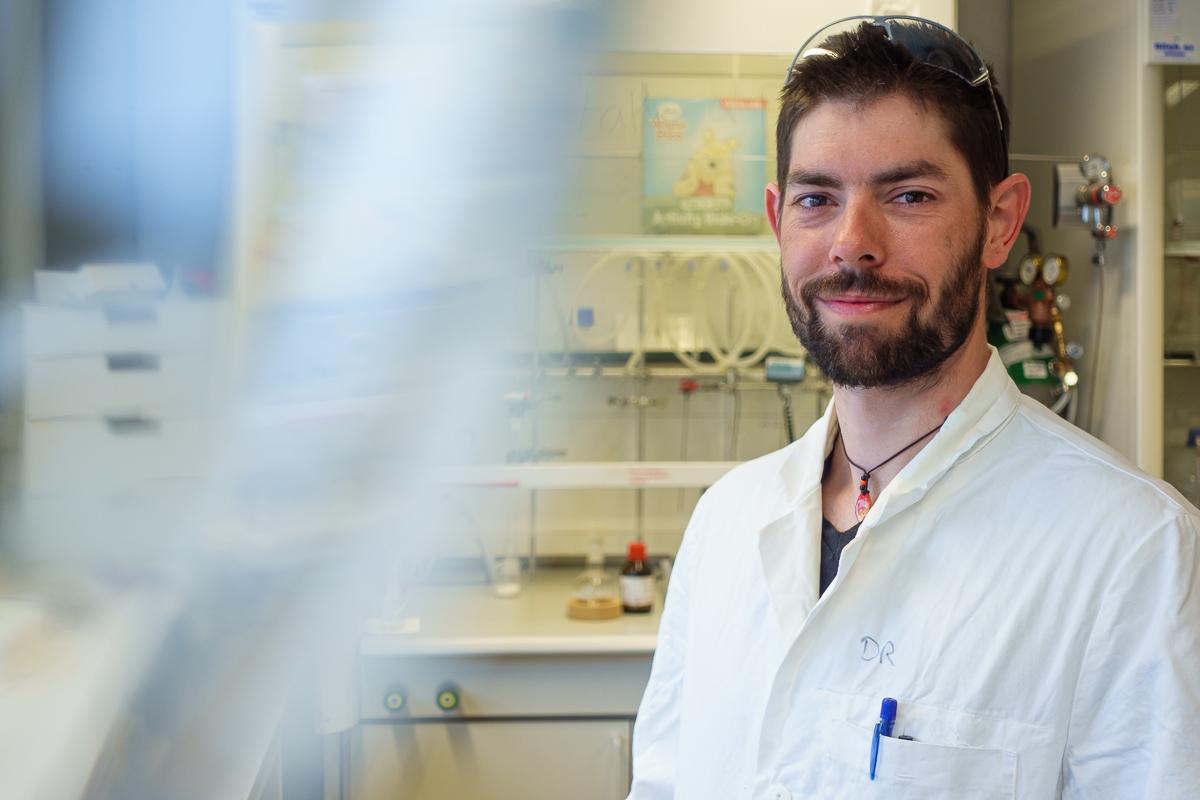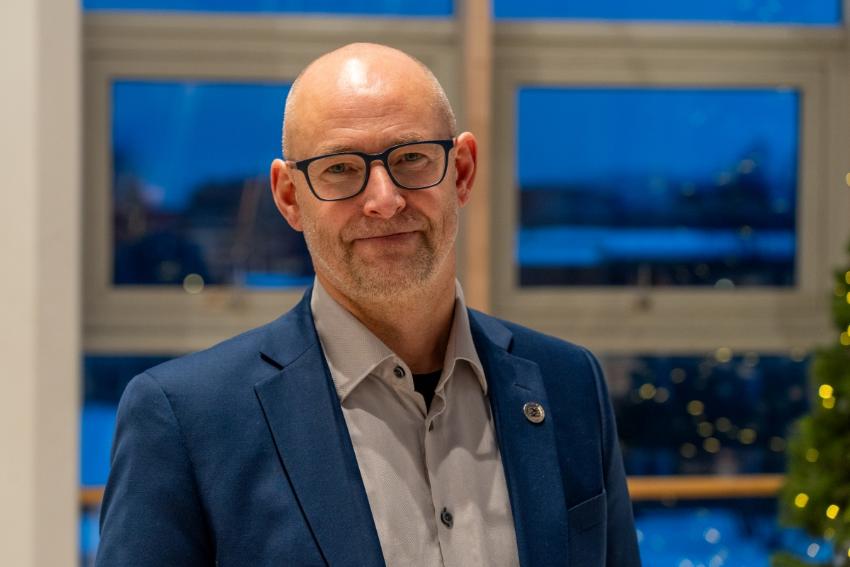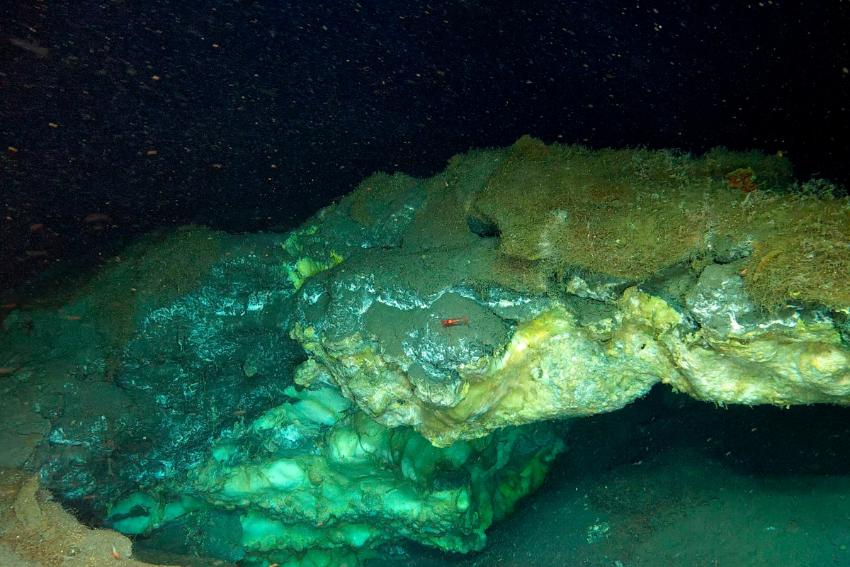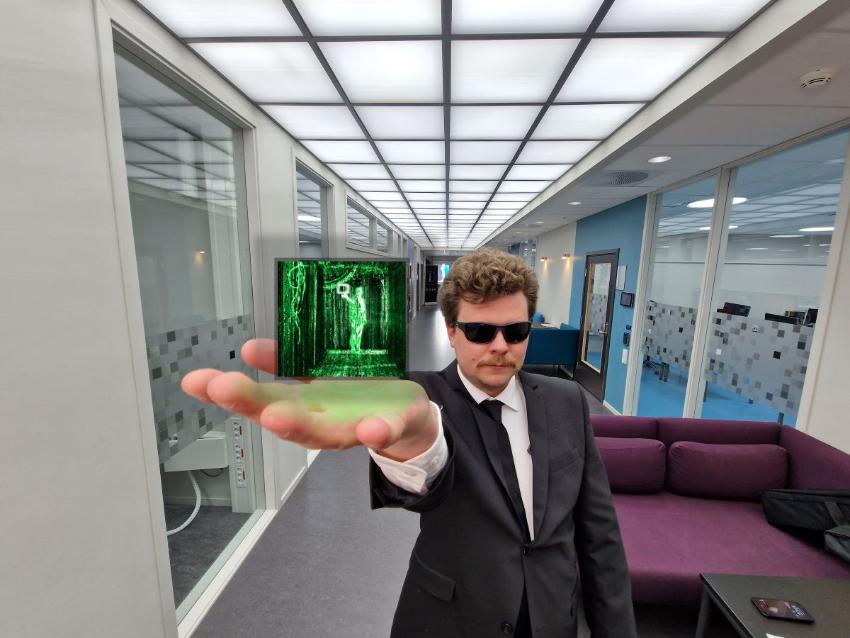Making antibacterial supermolecules
What do you get when you take some exciting molecules from the sea and rebuild them a bit, through some clever chemical processes in the lab? The answer: A germ killer of rank.

Manuel Langer and his colleagues have taken both molecules and inspiration from nature. They have refined a type of molecule called hydantoins, which we use in both shampoo and skin care products every single day.
These molecules have the curious property of being amphipathic. That means they are hydrophilic and like to interact with water. But at the same time, they are hydrophobic, which means that they are not very happy about it at all. And it is in this special combination where the magic lies.
Inspired by the immune system
The researchers have designed the new molecular structures in such a way that they work in the same way as so-called antimicrobial peptides, which are found in the immune system of us humans. These peptides are experts at breaking down the cell wall of the bacteria, and thereby killing them. This way, they bypass many of the bacteria's known resistance mechanisms.
Simply put: if someone has broken down your fortress walls, then it's much more difficult to defend yourself, right?
– The knowledge that these amphipathic structures are so effective against bacteria is not new, but we have developed around 20 completely new antibacterial molecules - and many of these show promising potential for overcoming the bacteria's ability to resist antibiotics, says researcher Manuel K Langer.
And they are effective, these new supermolecules. During testing in the lab, they attack the bacteria as soon as the researchers release them. After three to five minutes, it is game over for the bacteria.
Kills both types of bacteria
There are two main types of bacteria, and the researchers have tested the super trimmed molecules on both Gram-positive bacteria, which are bacteria with a strong cell wall, and against Gram-negative bacteria which have two softer cell membranes, but no strong cell wall.
It is the Gram-negative bacteria that are currently the biggest threat when we talk about antibiotic resistance. They are the ones that scientists all over the world are working hard to understand better and find new ways to fight off.
– Of the 20 hydantoin molecules we tested, 12 were active against Staphylococcus aureus and Bacillus subtilis, both of which are Gram-positive bacteria. Of these 12, five were effective against the Gram-negative Escherichia coli (e.coli) – and one of the molecules even killed Pseudomonas aeruginosa, which is often resistant to antibiotics, explains Langer.

Low toxicity
Medicines almost always have side effects on us humans. This is also the case with antibiotics, but it is important that the side effects are as few possible. Here too, Manuel and the other researchers had a moments of realisation.
– Happily, almost all of our new molecular structures showed very little negative impact on human red blood cells. That is a good indicator of whether potential drugs are toxic, and it seems that this class of chemical compounds is well tolerated by our bodies.
CANS - Centre for New Antibacterial Strategies
The research was done through CANS, UiT The Arctic University of Norway’s major investment in the fight against antibiotic resistance. The aim is to strengthen research into antibiotic resistance, look for new antibiotics, and find good ways to manage the antibiotics we have today. The center is financed by UiT and Tromsø research foundation (TFS).
Long way from the chemistry lab to the pharmacy shelf
There is a long way to go and a lot of expensive work to be done before this type of antibiotic ends up on our pharmacy shelves. It is a well-known rule of thumb that it takes at least 10, perhaps as much as 15 years, from the time you make an important discovery until there is a finished, approved medicine on the market.
In order to get there, the research communities are often dependent on the pharmaceutical industry taking over discoveries and develop them further into finished medicines.
– But our findings can in any case help the development of much-needed new antibiotics to combat the global increase in antimicrobial resistant bacteria, Manuel Langer concludes.
Contact information: Manuel K Langer
Scientific reference
"Investigation of tetrasubstituted heterocycles reveals hydantoins as a promising scaffold for development of novel antimicrobials with membranolytic properties" https://pubmed.ncbi.nlm.nih.gov/36739750/


